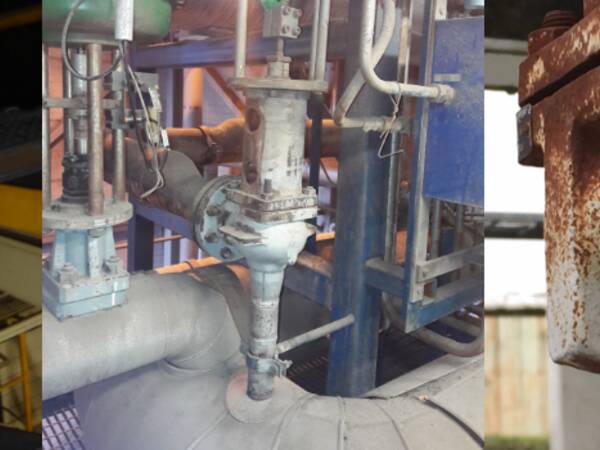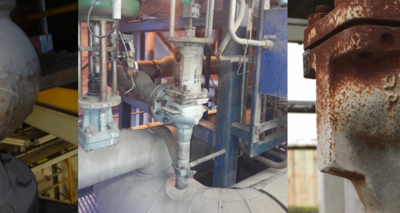

DIN stands for ‘Deutsches Institut für Normung’, meaning ‘German Institute for Standardisation’. This institute develops norms and standards and has been based in Berlin since 1917. Since then, it has undergone several name changes. Originally, German standards were called ‘Deutsche Industrie-Normen’ or ‘German industrial standards’, but the term Das Ist Norm was also used. Only in the 1970s did the name ‘DIN’ become the official symbol of technical standardisation in Germany.
The origins of the DIN
It all started in times of war: when the German Empire participated in World War I, all the capacity of German industry was used to produce the goods they needed for the battles, especially shells, armour and machinery. To this end, factories in every part of the Reich had to contribute their share. When they were later assembled, they often simply did not fit. It was therefore necessary to standardise those goods - the so-called Deutsche Industrie-Norm (German Industry Standard) was born. The first step was to create production standards for heavy machinery - these consist of countless different and sometimes even minuscule parts: proper assembly was therefore mandatory. The first part to be standardised was the taper pin; many other parts followed.
The war ended and the German Reich ceased to exist, but the DIN lived on and became increasingly important. In 1920, the Deutsche Industrie-Normen became a voluntary association and in the following years it published those standards that are not only still in use but the best known to this day, for example the DIN 476 that defines the different paper sizes. It is not only still in use today (e.g. A4 format) but was also adopted by the International Organisation for Standardisation (ISO) to an international standard.
DIN standards
DIN standards are the result of work at national, European and/or international level. Anyone can submit a proposal for a new standard. Once accepted, the standards project is carried out according to established rules of procedure by the relevant DIN standards committee, the relevant technical committee of the European standards organisation CEN (CENELEC for electrical engineering standards) or the relevant committee at the international standards organisation ISO (IEC for electrical engineering projects).
In 1920, the standard already mentioned above appeared for paper formats such as DIN-A4. Another well-known DIN standard is that of sensitivity of photographic material (counterpart of the US designation: ASA). This is a logarithmic unit. Each increase by 3 indicates a film twice as sensitive. Common film sensitivities are 21 and 24 DIN.
Many audio and other devices as made between 1955 and 1975 were equipped with so-called DIN plugs. IBM and compatible personal computers also used a 5-pin DIN plug as a connection for the keyboard until the late 1990s. Meanwhile, the Mini-DIN plug has also become a standard, e.g. for S-Video and PS/2 connections.
Standards are developed with full consensus, i.e. they are developed by experts with the aim of reaching a common position, taking into account the state of the art.
DIN standards are revised at least every five years. If a standard no longer reflects the current state of technology, it is revised or withdrawn.
DIN and spring fuses
But where is the connection with spring fuses? For that, first back into history. The invention of the steam engine and the increasing use of boilers for steam supply, during Industrialisation, led to the need to protect human lives from explosions. A first type of ‘safety’ valve was developed. This first version used a weight to hold the pressure of the steam, with the disadvantage that they were easy to adjust (i.e. too heavy) or operate accidentally... so actually not very safe yet.
In 1856 was the invention by John Ramsbottom of the spring-loaded safety valve and it was universally used on the steam locomotive in railways and later for stationary installations. Today, you still see these spring-loaded safety valves as the most commonly used option.
The DIN standardisation meant that the flange connections on the spring-loaded safety valves also had to be standardised, and this of course happened in Germany with the DIN standard. The name DIN spring safety valves therefore mainly has to do with the type of flange used The code for the flanges used has been a European Standard since 2001, namely EN 1092, but the dimensions are largely taken from the old DIN. standard: DIN 2501.
The origins of used codes and standards.
In another blog I discuss ASME and API in more detail, click here, but just briefly:
- In 1880, the American Society of Mechanical Engineers (ASME) was founded in response to numerous failures of steam boiler pressure vessels. To this day, the ASME Boiler and Pressure Vessel Code (BPVC) rules and certifies pressure relief devices, probably the most widely used code for safety valves worldwide.
- In 1919, the National Board of Boiler and Pressure Vessel Inspectors (NB) was established and since 1921, this board has provided assurance that a pressure vessel component is constructed in accordance with their standard and inspected by a qualified inspector from the National Board.
- In Germany, the Dampfkessel-Revisions-Verein (Steam Boiler Inspection Society), later known as the TÜV, was founded in 1866 with again the same goal: to prevent accidents by establishing rules for the design and inspection of pressure vessels. Other European countries followed with their own regulations and authorities.
- In the Netherlands, this was the Dienst voor het Stoomwezen, established in 1855. It was appointed in the Stoombesluit as the executive authority of the Stoomwet (Steam Act). In 1994, after a 12-year process, the Stoomwezen was privatised. This is now the Lloyd's Register Steam Industry and it is concerned with drawing up rules for inspecting the safety of pressure equipment.
Traditionally, these were mainly steam boilers, but today they also include other items, such as gas tanks. It is a designated inspection authority (AKI), also known as a ‘notified body’, for the (periodic) inspection of pressure equipment. - The legislation on this stems from the implementation of the Pressure Equipment Directive (Directive no.97/23/EC of the European Parliament and the Council of the European Union) of 29 May 1997. This directive replaces the Steam Act. Current 2014 directive no.2014 /68 /EU (see this blog for more information on that)
With all this information, hopefully you have a better idea of DIN standards. If you have any questions or would like some more information, please feel free to contact me.

